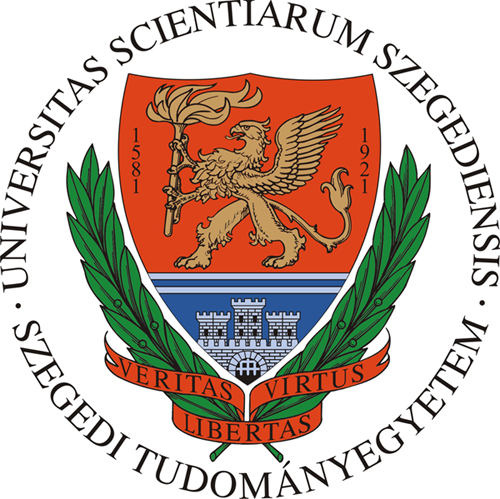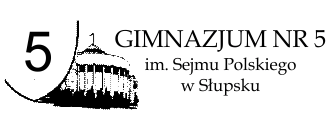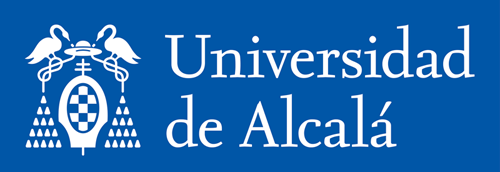INTRODUCTION
It is mainly male youths whose results can be of interest. 47% are descended from immigrants (however of no Muslim origin), agreed to the statement "I find it offensive if two gay men kiss on the street." Among youth with parents of Turkish origin agreed at a rate of 78%. Female students however expressed less homophobia but it was still high among young women of Russian or Turkish heritage.
„Simon's study showed that the more a youth accepted traditional images of masculinity, the greater their rejection of homosexuality. And further: if youths feel discriminated against themselves, they will become more homophobic. However, the more contact youths have with gays and lesbians, the weaker their homophobic attitudes become.”
It is also important to take into consideration some basic cultural and religious habits and customs as Muslim religious educator Rabeya Müller states: „basically, in Islamic thinking, intimate kinds of affection are kept within the intimate sphere, and are not displayed in public”.
http://www.dw.com/en/homophobia-among-muslim-students-in-germany/a-15822192
We may ask: can school education and curriculum create a safe environment for LGB migrant students if their family or religious and cultural community doesn’t accept homosexuality as stated above? Several best practices recognize cultural differences in a positive way and understanding other cultures. We can also state and find several examples that multiculturalism, tolerance towards “diversity” exists at all levels of education system at many European countries.
The ILGA Annual 2016 reported: the EU’s asylum agency (EASO) has developed and published training modules and a research guide, tackling some of the challenges regarding LGBTI asylum seekers. Also, the European Parliament adopted a report to tackle homophobic and transphobic school bullying and “to support the inclusion of objective information on LGBTI issues in school curricula” (ILGA 2016).
Another example of adopting special curriculum to schools, is Andrew Moffat’s teaching resource book No Outsiders in Our School. Teaching at a primary school with 99% Muslim students, Moffat’s book shows how the equality act can be implemented at schools. As a gay primary teacher he says: „children are taught to welcome all human beings, regardless of race, sexuality, disability or gender identity.” http://www.independent.co.uk/voices/what-its-like-to-be-a-gay-man-teaching-lgbt-equality-at-a-muslim-school-a6889561.html
So, it could be assumed that students become tolerant if they get a sensitive education but Jörg Steinert disagree: "If one looks at the different forms of schooling, it becomes obvious that a formally better education doesn't have any sweeping effect on the acceptance of core values." How „safe” are schools towards LGB students? In 2012, LGBT Youth Scotland made a survey on Life in Scotland for LGBT young people, aged 13-25. Unfortunately, schools appear to be the place where LGBT young people feel least protected or safe. In spite of the facts listed above, they often have to face there homophobic, biphobic or transphobic environment. 69.1% of all LGBT respondents had experienced homophobic or biphobic bullying in school.
On the question of LGBT Youth Scotland how to improve the educational experience for LGB students to feel safe was as follows (with altogether 114 responses):
- more visibility in the teaching curriculum: teachers and subjects normalising LGB people, same-sex relationships, and transgender identities.
- inclusion: teachers should be confident discussing LGB issues and transferring them
in other subject areas as well
- constantly addressing homophobia, biphobia and transphobia whenever it is manifested, and well before it can develop into bullying.
https://www.lgbtyouth.org.uk/files/documents/Life_in_Scotland_-_Education.pdf
http://www.dw.com/en/homophobia-among-muslim-students-in-germany/a-15822192
School environment of LGB students is often described as an extraordinary heteronormative surrounding, space that force youngsters to hide their emotions and sexuality.
Eleanor Formby’s (2013) research about bullying and homophobic situation in Europe’s institutions suggests the following advice concerning the support towards LGB students. It is suuggested that „a ’one size its all’ approach from professionals working” with (LGB) students may not be helpful.
As a result of the survey some suggestions for future advice, assistance or support for LGB young people were summed up:
- individual support, but also inclusive education practices (IGLYO 2007),
- support shuld not mean to assume or suggest that all LGB young adults will have only negative experiences of education,
- not to not portray LGB students as ‘victims’,
- ways to provide and/or support school-based LGB support services (both individual and group-orientated),
- mutual or peer support among LGB young people (strengthen confidence and offering emotional support),
- online information about related issues (and blogs),
- inform and improve general awareness of LGB lives and identities,
- supporting LGB young people with their family relationships (if appropriate), avoiding disclosure or exclusion of them,
- assistance to schools and other education providers (training, workshops on sex education).
http://shura.shu.ac.uk/10144/1/Formby_-_Bullying_Report_-_WEB.pdf
Various articles mention LGB young people with a migration background as an issue of „multiple discrimination”. Observing the book of a Roma lesbian woman in Serbia could also remind us to the situation of LGB students with a migration background in Europe. „Traditionally, within Roma culture, the most severe punishment that can be handed out to any individual Roma person is isolation from the community. In the past, this punishment usually resulted in an inability to survive and even death” (Kurtic 2013). As Fremlova (et al.) describe, young Roma LGB people are the most vulnerable group facing triple discrimination: first as a Roma, secondly as a gay, lesbian or bisexual persons and thirdly as LGB person in the Roma community, because of the closed tradition, culture and religiosity in the community.
Social exclusion or being rejected as an LGB young person by the close family members or by the community of any kind was shown to force people into self-denial and even constructing double life strategy.
https://www.lgbtyouth.org.uk/files/documents/guides/Coming_out_guide_-_LGB.pdf
The article of Judit Takács, ILGA-Europe and IGLYO (2006) summarizes a survey made in 2006, in which 754 individual responses from 37 European countries as well as 41 responses from European – mainly LGBT – organisations were received. Very often church institutions (Catholic, Muslim, Buddhist, Jewish, etc.) were „described as inherently homophobic, which in some cases led to the development of internalised homophobia at the intrapersonal level.” A great number of formerly religious respondents were leaving their church because they were suffering from institutionalised homophobic discrimination and prejudice. „They found the religious teachings of their former churches to be incompatible with their own life experience” (Takács 2006).
And even if LGB is ‘against’ one’s religion, as some gay, lesbian or bisexual students state, the following can/should be reconsidered: „There are many lesbian, gay and bisexual people who are religious and many places of worship are welcoming to them. If your religion or place of worship doesn’t accept LGB people, you can still have your own relationship with your god, and no-one has the right to tell you otherwise.” This might be a solution for some young people but with a tight, close connection to a religious group, it could cause doubts.
https://www.lgbtyouth.org.uk/files/documents/guides/Coming_out_guide_-_LGB.pdf
STORIES
Related to multiple discrimination, Mehmet’s (Krefeld, Germany) story can be a good example.
At the age of 3-4, he doesn’t play with his brothers, prefers dolls and adores himself in front of the mirror. His mother takes him to a physician who describes him a testosterone-therapy. Trying to adopt Muslim ‘culture’, Mehmet takes part in different fights with his brothers, because this is considered to be masculine. He leaves his family at the age of 17 but the pressure of the culture and religion is too tight. Other families, peers with migration background from Turkey warn his father: Mehmet could be dangerous, so the family, friends, the whole community outlaw him as a traitor. So finally, what is left for the young man, is isolation from the family, community and also from Muslim religion, starting a totally new life. (https://www.welt.de/vermischtes/article153106736/Der-schwule-Sohn-in-der-muslimischen-Familie.html)
In this case, support, protection, aid from family, school, peer-groups, or religious community is hopeless due to the very strong cultural affiliation to the religious and cultural muslim community. Since peers, friends are also from this community, isolation is always specific and exclusion is a typical form of rejection. On the other hand, media, Mehmet’s courage, the safe country as migration background (here: Germany), LGBT institutions offering support, and last but not least a safe and reliable Europan legal background can offer an environment where an LGB young person can feel secure.
DISCUSSION QUESTIONS
Reflect on the story above and discuss the following:
1. What kind of support receives Mehmet? Can you think of any other kind of aid, protection for him?
2. Can you think of similar stories of young people (with a migration background) in your country? Follow up one story and describe it.
3. What kind of legal protection (e.g. institutions) have you got in your country? Which support do they offer on their website? Describe them.
4. How would you assess the attitude of your institution (school, university) in dealing with diversity, especially homosexuality?
5. Do you know any
- school subjects,
- seminars at your university where the topic of homosexuality is discussed? How is the topic dealt with?
6. Imagine that one of your students is coming out as a gay or lesbian person. What would you do as a teacher?
Why is it still important to come out for students with a migration background?
In the last years many organizations were settled to support (young) LGB people. There are a couple of institutions supporting religious (Muslim, Catholic, Jewish etc.) LGBT people as well although as Wolter and Yılmaz-Günay (2009) emphasize it is rather typical for the USA and UK having self-organized institutions of this kind. Germany has not been successful in this respect. For the German context the detailed text analysis of the Islamic holy books by the scholar Andreas Ismail Mohr were published. The Islamic gay writer has been trying to endeavour a wide Intra-Muslim debate which is accepted by Muslim people living in Germany.
It was for some years, that asylum courts said it would be ‘reasonably tolerable’ for lesbian, gay and bisexual people to be ‘secretive’ about their sexuality in their home country in order to avoid persecution there. Many asylum seeker were denied refugee status as a result of this point. However, in 2010 an important court case in UK rejected this idea. Therefore it is now „agreed that if a lesbian, gay or bi person has to hide their sexual orientation in order to protect themselves from persecution, they are eligible for refugee status in the UK” or in other EU-countries. http://www.stonewall.org.uk/help-advice/asylum/overview-asylum
Takács (2006) and D’Augelly (2003) refer, „adolescent years are especially challenging for young LGBT people”. The social environment of schools and close families are of utmost importance in the lives of young adults, including LGBT youth. ”Therefore, in addition to worrying about being verbally abused or physically attacked and consequently suffering from chronic stress for years, the accumulated weight of uncertain acceptance both by family and peers can lead many young people to hide their sexual orientation until early adulthood, when they are independent of families and are no longer in school”.
The majority of young LGB student think that coming out would endanger their physical and emotional well-being. So „they choose to manage their identities by hiding, a practice which can result in suicide ideation, depression, dysfunctional peer group and family relationships, alcohol and drug use.”
LGBT Youth Scotland implies the benefits why to come out in spite of the difficulties to consider:
– You can be yourself
– Can unload the religious secret and burden
– Living as you want to live
– Can meet other lesbian, gay and bisexual people (also with migration background)
– Helping/supporting other lesbian, gay and bisexual people and help in religious question
– Gradually feeling at ease with yourself, without hiding
– Educating others/breaking down stereotypes/myths
– Being a positive role model for others
- Avoid mental stress
- Can get support and advice from others.
https://www.lgbtyouth.org.uk/files/documents/guides/Coming_out_guide_-_LGB.pdf
STORIES
- Nasser El-Ahmed’s story about kindnapping and torturing by his family for being gay. In: Der Tagesspiegel. (German text) https://www.youtube.com/watch?v=zeffcvY2ogw
- Nasser El-Ahmed at law court. His family was punished because of kidnapping the gay young boy. In: euronews. (German text)https://www.youtube.com/watch?v=F-VjEiICBwg
- Young Ibrahim fled from Lebanon to Cologne because of being gay and finding a safe place there in LGBT communities. In: Fluter. Magazin der Bundeszentrale für politische Bildung. (English text) http://www.bpb.de/gesellschaft/gender/homosexualitaet/223555/schwul-verfolgt-geflohen
- Muslim lesbian woman honours her parents. (English text) https://www.youtube.com/watch?v=OeelSnRTzPY
RESOURCES
- Béres-Deák Rita (2012): Szivárványcsaládok a magyar oktatásban. In: Kozma, T.; Perjés I. (szerk.). Új kutatások a neveléstudományokban. A munka és nevelés világa a tudományban. Budapest. MTA Pedagógiai Tudományos Bizottság – ELTE Eötvös Kiadó, 491–508.
- D’Augelli, Anthony Raimond (2003): Lesbian and Bisexual Female Youths Aged 14 to 21: Developmental Challenges and Victimization Experiences. In: Journal of Lesbian Studies 7(4): 9-30.
- Fischer, Eszter (2010): Meleg a gyerekem?! Budapest. Saxum Kiadó Kft.
Formby, Eleanor (2013). The impact of homophobic and transphobic bullying on education and employment: a European survey 2013. Sheffield Hallam University, - Sheffield. Available at: http://shura.shu.ac.uk/10144/1/Formby_-_Bullying_Report_-_WEB.pdf
- Főglein, Karola (2016): Transzneműség és a nemi identitás interakciója. Gyermeknevelés 4. évf., (3. szám), 59–69.
http://old.tok.elte.hu/gyermekneveles/16_3_szam/pub/foglein_karola.pdf - Fremlova et al. Barabaripen (2015): Young Roma speak about multiple discrimination. Council of Europe.
- IGLYO (2007): Guidelines for an LGBTQ-inclusive education. IGLYO, Brussels.
- ILGA-Europe (2016): Annual Review of the Human Rights Situation of LGBTI People in Europe. Available at www.ilga-europe.org/sites/default/files/Attachments/annual_review_2016-for_web.pdf
- Kurtic, Vera (2013): Dzuvljarke Roma Lesbian Existence. Available at: http://www.errc.org/cms/upload/file/dzuvljarke-roma-lesbian-existence.pdf
- Lehtonen, Jukka (2003): Heteronormativity in School Space in Finland. In: Lambda Nordica, 9(1-2):94-103.
- Marcel Reich: Der schwule Sohn in der muslimischen Familie. Die Welt. Available at:
https://www.welt.de/vermischtes/article153106736/Der-schwule-Sohn-in-der-muslimischen-Familie.html - Moffat, Andrew (2016): No Outsiders in Our School: Teaching the Equality Act in Primary Schools (Speechmark Practical Resources). Speechmark Publishing Ltd, London.
- Neményi, Mária; Laki, Ildikó; Ságvári, Bence; Takács, Judit; Tardos, Katalin; Tibori, Tímea (2011): Az egyenlő bánásmóddal kapcsolatos jogtudatosság növekedésének mértéke – fókuszban a nők, a romák, a fogyatékos és az LMBT emberek. Kutatási zárójelentés. MTA Szociológia Kutatóintézet – EBH.
http://www.egyenlobanasmod.hu/tamop/data/MTA_1hullam.pdf - Sabine Ripperger: Homophobia among Muslim students in Germany. Deutsche Welle. Available at:
http://www.dw.com/en/homophobia-among-muslim-students-in-germany/a-15822192 - Takács, Judit, ILGA-Europe and IGLYO (2006): Social exclusion of young lesbian, gay, bisexual and transgender (LGBT) people in Europe. Available at: https://www.academia.edu/5152704/Social_exclusion_of_young_lesbian_gay_bisexual_and_transgender_LGBT_people_in_Europe_2006_
- Takács, Judit (2007): Előítélet és megkülönböztetés az iskolában: Leszbikus, meleg, biszexuális és transznemű (LMBT) fiatalok iskolai tapasztalatai Európában. Educatio 2007, (1), 67-83.
- Wolter, Salih and Yılmaz-Günay, Koray (2009): Muslimische Jugendliche und Homophobie – braucht es eine zielgruppenspezifische Pädagogik? In: Bundschuh S, Jagusch B and Mai H (eds) Facebook, Fun und Ramadan. Düsseldorf: Informations- und Dokumentationszentrums für Antirassismusarbeit e.V. Available at: http://ipaed.blogsport.de/images/2009121720Muslimische20Jugendliche20und20Homophobie.pdf
- What it's like to be a gay man teaching LGBT equality at a Muslim school. The Independent. Available at:
http://www.independent.co.uk/voices/what-its-like-to-be-a-gay-man-teaching-lgbt-equality-at-a-muslim-school-a6889561.html - LGBT YOUTH SCOTLAND. Available at:
https://www.lgbtyouth.org.uk/files/documents/Life_in_Scotland_-_Education.pdf - LGBT YOUTH SCOTLAND. Available at:
https://www.lgbtyouth.org.uk/files/documents/guides/Coming_out_guide_-_LGB.pdf
All internet resources retrieved: 28 November 2017.














